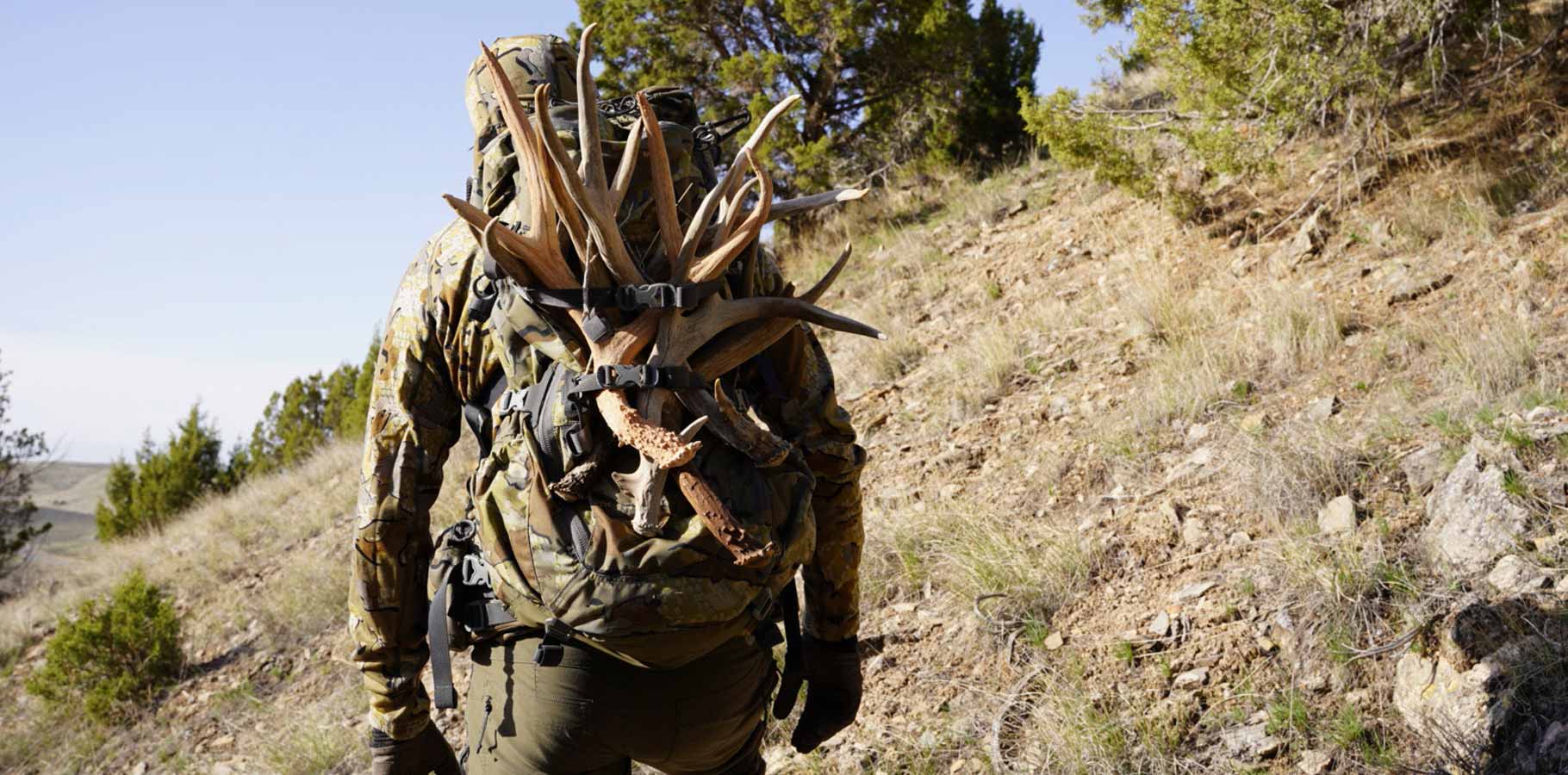
7 Tips for Shed Antler Hunting in Mountain Regions
Shed hunting around the US is different depending on which state you are in. You can use similar shed hunting strategies throughout the Western and Southwestern states, even though the terrain and climates are different between regions.
Deer and elk drop their antlers when their testosterone levels decrease after the rut. Generally, deer will drop their antlers around January, and elk will drop antlers later in February or March. Each state has specific dates that you are allowed to shed hunt, so be sure to research the regulations in the state. In the western states, the season opens about a month after animals drop their antlers. In order to successfully find sheds, it is important to understand wintering grounds, elevation zones, and terrain.
Generally, deer and elk will drop their antlers in winter ranges when the weather is still cold and snowy. By the time shed season opens up around April, most animals will have already started moving back to their summer rang—making it difficult to find sheds based on where the animals are during the shed season. By doing research and talking with local officials you can pinpoint specific winter ranges that will yield more antlers.
Once you find sign or sheds, determine the elevation, and use it to create an elevation zone to focus on. This tactic will help you save time and energy during outings.
In the field there are a few key indicators that you are in the right or wrong area.
1. Tracks: Close examination can give you an idea when animals were in that specific area. Shed seasons are usually a month later than when the antler was shed. The tracks you should be focusing on should be about a month old. If you find fresh tracks then you are probably too high because the animals are working back up to their summer range.
2. Cover: In searching in the field or online find an area with sufficient cover and food for Elk. Cover could be heavily forested areas or steep remote areas away from roads and livestock.
Once you find a freshly dropped side of a big single, use two strategies to match up the set. First, mark the location on your mapping app, like OnX maps maps or Scout to Hunt and then search for tracks. When you find tracks, guess which direction the buck or bull came from. Hike in the direction and if you cannot find the matching side quickly, go back to the waypoint.
Second, grid the nearby area. Gridding is hiking in a zig zag pattern up and down from the location of the shed. Hike in 10–15-yard grid lines to ensure you don’t miss the antler if it is hidden.
7. USE E-SCOUTING MAPPING TOOLS TO PINPOINT LIKELY SHED ANTLER AREAS.
Once you get enough information about the wintering grounds and unit you can head to your mapping app and start to pinpoint certain areas that you want to spend time in. Start by finding areas that are off the road and trails. When you have the area picked out, find glassing points that will allow me to look over the entire area. Make sure to find multiple glassing points on the same ridge to see different perspectives of the hillside.
SHOP THE GEAR
Explore some of the products featured in the article.






